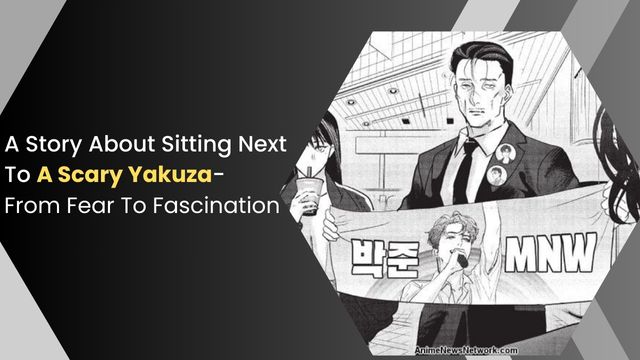Hey there, ever wondered what it’s like to sit next to a real-life Yakuza member? Well, get ready because we’ve got an incredible story for you! Picture this:
You’re on a plane, just minding your own business, and suddenly, you find yourself sitting right next to someone who looks like they’re straight out of a movie.
Dressed in a sharp suit, tattoos peeking out, and an aura that sends shivers down your spine.
Yup, that’s what happened to me during a routine trip to Tokyo. But here’s the thing – it’s not just about fear and danger. It’s about curiosity and getting a glimpse into a world that’s usually hidden from view.
So, buckle up, because we’re about to take you on a rollercoaster of a story that’s both thrilling and eye-opening!
A Brief Glimpse into the Yakuza:
The Yakuza, a Japanese organized crime syndicate with roots dating back to the 1600s, stands as one of the largest and most powerful criminal organizations globally. It boasts an estimated membership exceeding 100,000 individuals.
This enigmatic group is renowned for its strict hierarchical structure, intricate tattoos, and involvement in an extensive array of criminal activities, ranging from gambling and drug trafficking to extortion and prostitution.
Diving deeper into the Yakuza’s inner workings, we find a complex web of divisions, each with its own territory and hierarchy.
At the helm of each Yakuza clan stands the “oyabun” or godfather, a figure responsible for overseeing all aspects of the clan’s operations.
Another distinctive feature is their elaborate tattoos, which adorn significant portions of their bodies.
These tattoos are not mere decorations; they hold symbolic significance, representing the member’s clan and position within the hierarchy.
The Yakuza’s involvement in criminal enterprises is wide-ranging. Gambling, in particular, serves as a primary source of income for the organization.
Additionally, the Yakuza wields substantial control over the Japanese drug trade, further expanding their financial reach.
The Yakuza maintains a complex relationship with Japanese society.
Beyond their criminal pursuits, the Yakuza provides protection and services to businesses and individuals, further blurring the lines between crime and community.
In summary, here are key takeaways about the Yakuza:
Size and Reach:
The Yakuza is a Japanese organized crime syndicate with an estimated membership exceeding 100,000.
Hierarchy:
The Yakuza is divided into distinct clans, each with its own territory and hierarchical structure.
Loyalty And Violence:
Yakuza members are known for their unwavering loyalty to their clan and their readiness to resort to violence to safeguard their interests.
Criminal Activities:
The Yakuza is involved in a wide spectrum of criminal activities, including gambling, drug trafficking, extortion, and prostitution.
Complex Relationship:
The Yakuza maintains a multifaceted relationship with Japanese society, being both feared and offering protection and services to various entities.
Understanding the Yakuza is not just about acknowledging their criminal activities but also delving into the intricate layers of Japanese society that both abhor and rely on their presence.
The Tense Encounter:
The tension-filled confrontation between the Yakuza member, Hanzo, and the resolute police officer, Nakamura, unfolds within the dimly lit confines of a desolate alleyway.
Hanzo proceeds cautiously along the alley when his sharp senses detect Nakamura lurking in the shadows.
As Nakamura steps forth into the meager light, she swiftly identifies herself as a law enforcement officer, casting a spotlight on her relentless pursuit of justice.
She informs Hanzo that she is investigating his alleged affiliation with the Yakuza, a revelation that sets the stage for a gripping encounter.
Hanzo, with a measured tone and an air of defiance, vehemently denies any involvement with the Yakuza.
However, Nakamura remains resolute and unwavering in her suspicions. Armed with damning information that suggests Hanzo’s participation in a slew of criminal activities, including gambling, drug trafficking, and extortion.
She persists in her conviction that he is a key player in a shadowy world.
As the standoff intensifies, Hanzo issues a stern warning, imploring Nakamura to reconsider her course of action, asserting that she’s making a grave mistake. Yet, Nakamura remains steadfast in her determination to uphold the law.
Tensions mount as the inevitable clash looms. Hanzo, his desperation mounting, reaches for a knife concealed on his person, but Nakamura’s training and reflexes prove superior.
She deftly draws her weapon and points it squarely at him, a palpable symbol of her authority and resolve. With a voice laden with command, Nakamura orders Hanzo to relinquish his weapon, her unwavering gaze locking him in a battle of wills.
Finally, Hanzo, recognizing the futility of resistance, relinquishes his knife with a reluctant acquiescence. Nakamura holsters her firearm, taking control of the situation as she proceeds to handcuff him.
The harsh, metallic click of the handcuffs serves as the stark conclusion to their tense encounter, leaving Hanzo to confront the impending consequences of his actions.
Insights into the Yakuza Culture:
The Yakuza culture is a multifaceted tapestry, a world that intertwines strict hierarchy, unwavering loyalty, and a complex code of honor with the dark underbelly of violence, crime, and corruption.
Let’s delve into the key facets that define A Story About Sitting Next To A Scary Yakuza.
Loyalty:
At the heart of Yakuza culture lies an unyielding commitment to loyalty. Yakuza members swear allegiance to their clan and their “oyabun” or godfather.
This loyalty transcends mere dedication; it becomes an absolute obligation, with Yakuza members expected to prioritize the interests of their clan above all else. It’s a bond that shapes their actions, decisions, and lives.
Honor:
The Yakuza uphold a code of honor that guides their conduct. This code includes principles such as showing respect to elders, safeguarding the vulnerable, and seeking retribution for perceived wrongs.
However, this code can also serve as a moral smokescreen, justifying acts of violence and other criminal endeavors. It’s a double-edged sword that reflects the A Story About Sitting Next To A Scary Yakuza.
Hierarchy:
At its pinnacle stands the “oyabun,” the supreme authority, followed by the “kobun” or senior members, and then the lower-ranking members. This hierarchical structure demands respect and unwavering obedience.
Tattoos:
Elaborate tattoos are a hallmark of Yakuza culture, often adorning the bodies of its members. These tattoos are more than just intricate designs; they convey symbolic messages.
Yakuza tattoos represent the member’s clan, his position within the hierarchy, and his unwavering dedication to the Yakuza cause. They serve as a permanent mark of commitment, even in the face of adversity.
Complex Role:
The Yakuza occupies a complex role in Japanese society. On the other hand, the Yakuza also offer protection and services to businesses and individuals. This dual nature reflects a delicate balance between organized crime and community support.
In summary, A Story About Sitting Next To A Scary Yakuza culture is a realm defined by:
- Unwavering Loyalty: Yakuza members are bound by absolute loyalty to their clan and oyabun.
- Complex Code of Honor: The Yakuza adhere to a code of honor that blends respect for tradition with the justification of criminal actions.
- Hierarchical Structure: A strict hierarchy, led by the oyabun, governs the Yakuza world.
- Symbolic Tattoos: Elaborate tattoos symbolize clan affiliation, hierarchy, and unwavering commitment.
- Dual Role: The Yakuza plays a multifaceted role in Japanese society, evoking both fear and providing protection and services.
Unraveling the intricacies of Yakuza culture reveals a world of contradictions, where tradition and crime coexist, and loyalty often trumps morality. It’s a cultural landscape that continues to captivate and mystify observers around the globe.
The Aftermath:
The Yakuza’s historical involvement in Japan has left a significant and intricate legacy. This criminal organization has engaged in a broad spectrum of illicit activities, including gambling, drug trafficking, extortion, and prostitution, leading to a series of challenges and repercussions for Japanese society.
Increased Crime Rates:
One of the most prominent consequences of the Yakuza’s presence has been a surge in crime rates. The Yakuza’s involvement encompasses violent offenses such as murder and assault, as well as property crimes like theft and robbery. This wave of criminality has left a lasting imprint on Japan’s safety and security.
Economic Damage:
The Yakuza’s participation in illegal enterprises has inflicted substantial harm on the Japanese economy. For instance, their extortion schemes have coerced numerous businesses into shutting their doors, resulting in financial losses and economic instability.
Social Disruption:
Beyond the statistical impact, the Yakuza’s influence has sown seeds of fear and insecurity within Japanese society. This pervasive unease has hindered the creation of a cohesive and harmonious social fabric, eroding trust and confidence among citizens.
In response to these challenges, the Japanese government has implemented a series of measures aimed at curbing the Yakuza’s influence.
These initiatives include heightened penalties for Yakuza-related crimes and the enactment of laws designed to impede their operations. While these efforts have achieved some degree of success in reducing the Yakuza’s grip on Japanese society, the organization remains a potent and formidable force.
Despite these negative consequences, it’s important to note that the Yakuza has also had some positive impacts on Japanese society.
They have offered protection and services to businesses and individuals in areas where governmental support is insufficient or absent. Additionally, A Story About Sitting Next To A Scary Yakuza has played a role in disaster relief and community service activities.
However, these positive contributions pale in comparison to the negative impacts.
Its presence in Japanese society continues to cast a shadow, negatively affecting the economy, public safety, and social cohesion.
In conclusion, the aftermath of the Yakuza’s involvement in Japan is a nuanced and intricate narrative.
The Yakuza’s presence has left an indelible mark on the nation, underscoring the importance of ongoing efforts to mitigate their influence and restore harmony within Japanese society.
Pros And Cons-A Story About Sitting Next To A Scary Yakuza
| Pros | Cons |
| Gain unique insights into the Yakuza culture. | The inherent danger of associating with criminal organizations. |
| An opportunity for personal growth and self-reflection. | Potential legal implications. |
| Witness the unexpected human side of an intimidating figure. | Lingering psychological impact. |
FAQs:
Are The Yakuza As Dangerous As They Are Portrayed In Movies?
While the Yakuza engage in criminal activities, their level of danger varies. Some members are involved in violent crimes, while others focus on more business-oriented endeavors.
Did You Report The Encounter To The Authorities?
No, I did not report the encounter as I did not witness any criminal activity during our interaction.
How Can One Stay Safe When Encountering Potentially Dangerous Individuals?
It’s essential to prioritize personal safety. Avoid confrontation, maintain situational awareness, and report any suspicious activity to the appropriate authorities.
Conclusion-A Story About Sitting Next To A Scary Yakuza
Meeting the scary Yakuza was a wild adventure. I got a peek into their world, which is not something most people see. But, I also learned that it’s super important to be careful when you meet someone like that.
It can be dangerous! I’m lucky nothing bad happened, but it taught me to always be cautious in new situations.


